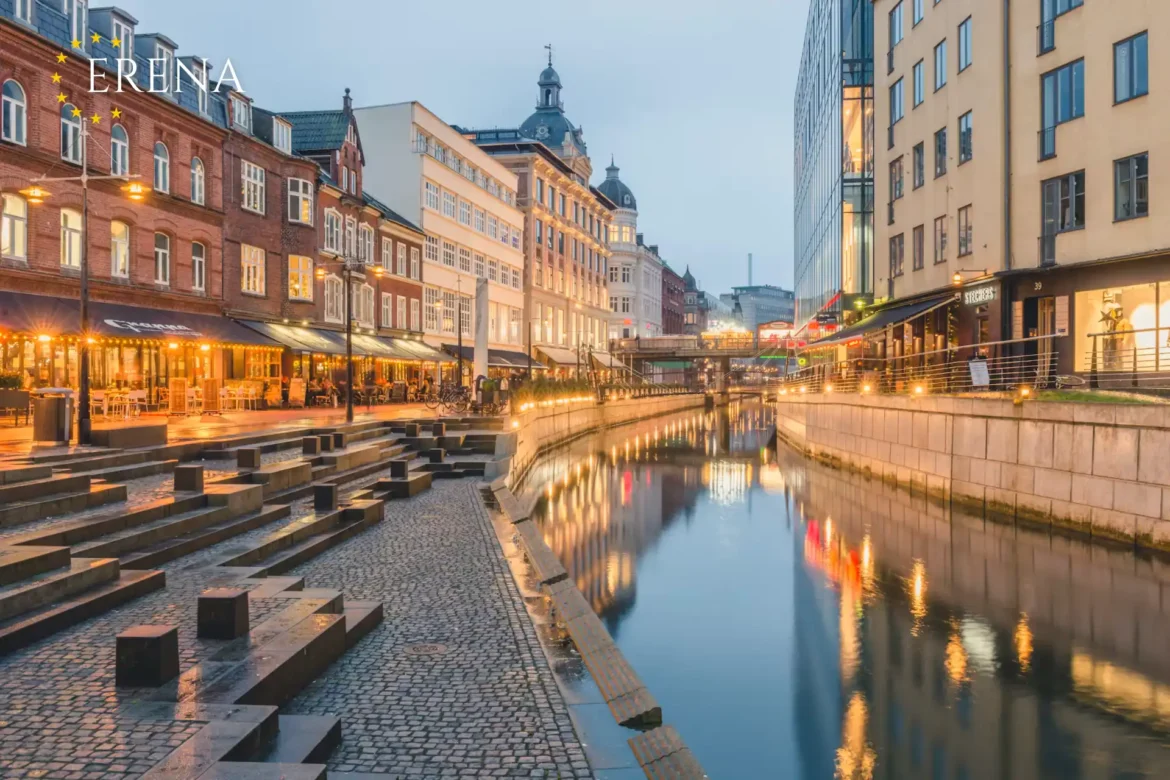Introduction
In 2025, the Aarhus real estate market continues to experience dynamic growth driven by strong economic factors and high demand. As Denmark’s second-largest city, Aarhus remains attractive to investors, young professionals, and students, creating a rapidly evolving landscape for residential and commercial properties. This overview examines the key trends shaping the Aarhus real estate market in the near future.
1. Rising Property Prices
Real estate prices in Aarhus continue to rise due to several factors:
• Increasing Demand – The city attracts young professionals, students, and expatriates, boosting housing demand.
• Limited Supply – Despite active construction, the availability of affordable properties remains constrained.
• Accessible Mortgage Rates – Low-interest rates enable more people to purchase properties.
• Investment Attractiveness – Real estate remains a stable asset, yielding consistent returns.
2. Sustainable Construction and Environmental Trends
Sustainable and energy-efficient building practices are a growing focus in Aarhus. Key aspects include:
• Low-Energy Buildings – Homes equipped with solar panels, insulation, and modern ventilation systems.
• Use of Renewable Materials – The adoption of eco-friendly construction methods.
• Development of Green Districts – Creation of neighborhoods featuring parks, green roofs, and cycling infrastructure.
• Energy Efficiency Incentives – Government programs encouraging property owners to implement energy-saving technologies.
3. Smart Home Technologies
Modern technology is increasingly integrated into Aarhus’s real estate market. In 2025, more homes feature:
• Automated Home Management Systems – Intelligent solutions for climate control, lighting, and security.
• Smart Meters – Real-time monitoring of energy and water consumption to optimize costs.
• Biometric Access Systems – Enhanced security for residential complexes.
• Internet of Things (IoT) in Real Estate – Integration of devices into a unified system, maximizing convenience and efficiency.
4. Growth of the Rental Market
The rental market in Aarhus continues to expand due to several factors:
• High Property Prices – Many individuals opt for renting over purchasing.
• Student Demand – The presence of major universities sustains a strong rental market.
• Remote Work Growth – Digital nomads and freelancers seek flexible housing solutions.
• Co-Living Popularity – Shared housing concepts gain traction as a viable alternative to traditional rentals.
5. Expansion of Suburban Areas
With rising urban property prices, there is increased interest in suburban and emerging districts such as:
• Lisbjerg – A rapidly developing area with modern residential projects.
• Skejby – A hub for scientific and medical research, attracting professionals.
• Egå – A coastal district favored by families seeking a balance between city life and nature.
Improved transportation infrastructure enhances suburban accessibility, increasing their appeal to buyers and renters.
6. Investment Opportunities
Real estate in Aarhus remains a lucrative investment, with key opportunities in:
• High Rental Yields – A strong rental market provides steady passive income.
• Growth of Commercial Spaces – Expansion in office and retail real estate sectors.
• Hospitality Industry Expansion – Tourism growth drives new hotel and serviced apartment developments.
7. Government Regulations
Regulatory measures aim to stabilize the real estate market. Key policies include:
• Restrictions on Short-Term Rentals – Increased oversight of Airbnb and similar platforms.
• Higher Taxes on Speculative Transactions – Measures to curb excessive property price inflation.
• Affordable Housing Programs – Development of residential complexes with controlled pricing for lower-income groups.
These initiatives help ensure market stability and housing accessibility.
8. Real Estate Market Outlook
In 2025, the Aarhus real estate market is expected to follow these trends:
• Growing Demand for Sustainable Homes – Increased interest in energy-efficient housing.
• Expansion of Smart Technologies – Adoption of digital solutions in new residential developments.
• Improved Transportation Networks – Enhanced connectivity to suburban areas.
• Stable Rental Market – Consistent demand for rental properties from students and professionals.
Conclusion
The Aarhus real estate market in 2025 remains dynamic and promising, shaped by sustainable development, innovation, and infrastructure improvements. High demand for housing, expansion of emerging districts, and the integration of digital solutions create favorable conditions for investors, tenants, and homebuyers. Aarhus continues to be one of Denmark’s most attractive cities for quality living and business opportunities.
Aarhus – Key Real Estate Market Trends in 2025
675

